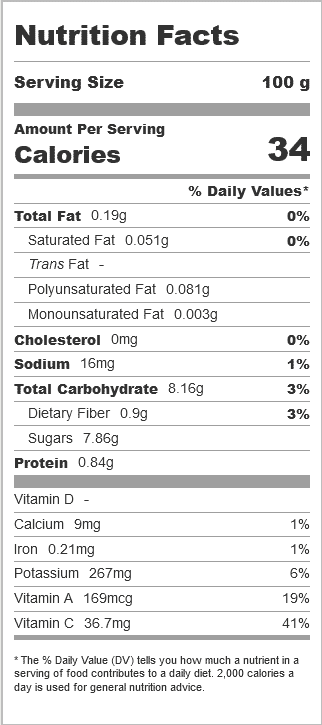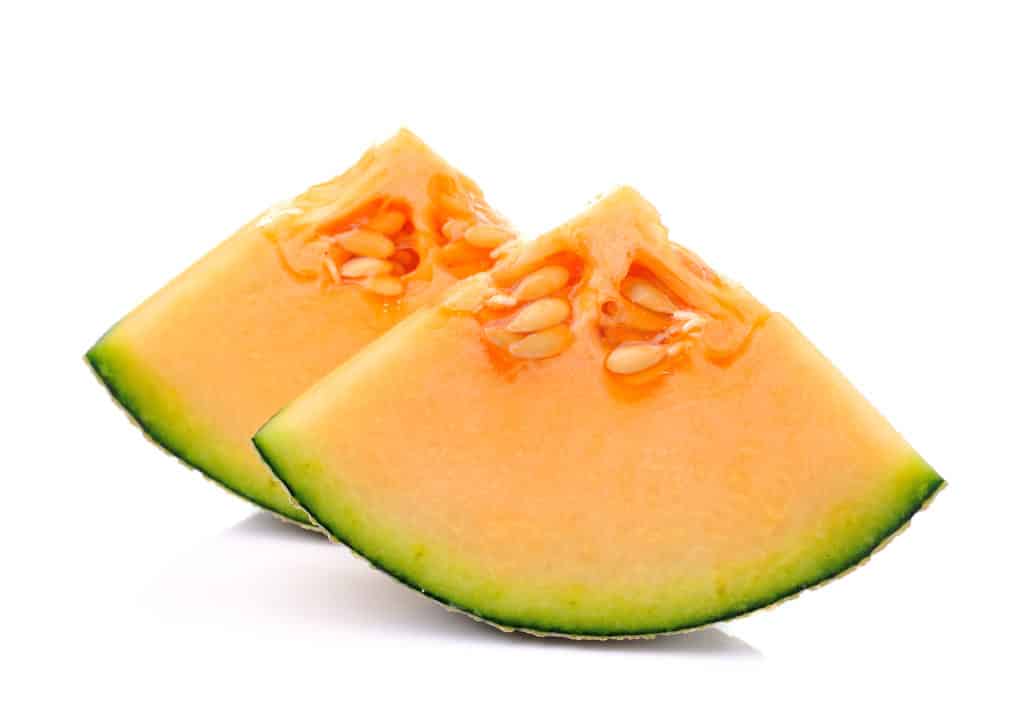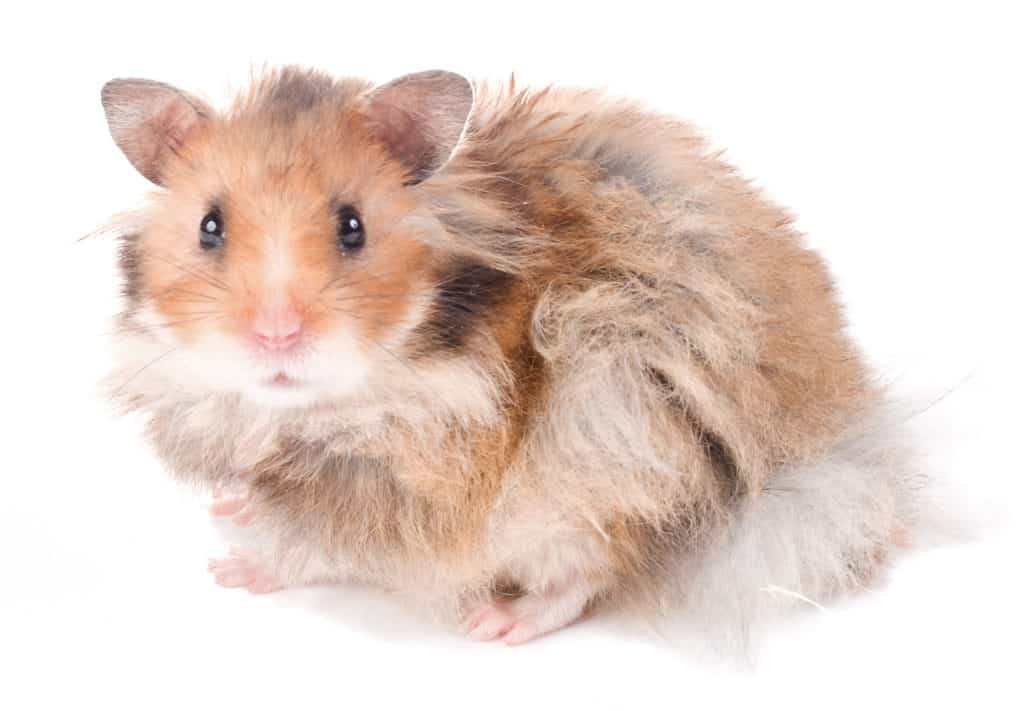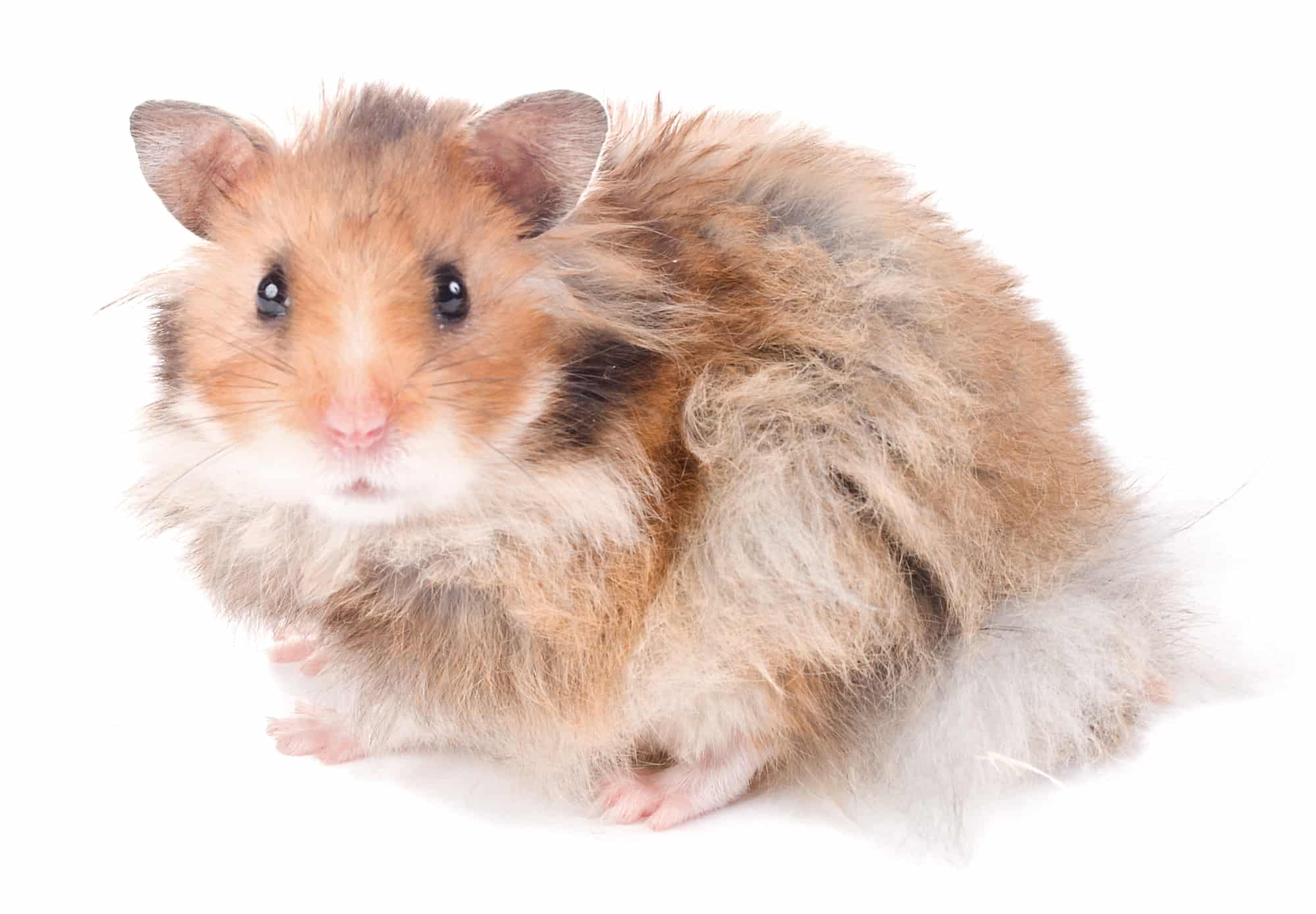Are you a hamster owner who loves the taste of cantaloupe? Do you want your hamster also to experience that sweet juicy taste? Hold on! Before you cut a piece of cantaloupe and share it with your hamster, find out if hamsters can eat cantaloupe (Spoiler Alert! – It depends on the type of hamster you own). Find out the health benefits and risks involved with feeding cantaloupe to hamsters. Find out how to feed cantaloupe to hamsters the right way.
Cantaloupe
Before we dive in and find out if hamsters can eat cantaloupe, let’s look at cantaloupe and where it came from.
The cantaloupe, also known as rockmelon and sweet melon (Also read: Can hamsters eat watermelon?), is a juicy fruit with orange flesh and ribbed skin. It can weigh between 0.5 and 5kgs. It is a variety of musk melon that belongs to the Cucurbitaceae family, just like pumpkin and zucchini (Also read: Can hamsters eat zucchini?).
Origin
It is not clear where the cantaloupes originated. It might have been in Persia, Afghanistan, or Armenia. But around 2,400 BC, they were being cultivated across Egypt, Iran, and Northwest India (Source: Veg Paradise). Back then, there was no difference between different kinds of musk melon, like cantaloupe and honeydew. When the Hebrew people, led by Moses, wandered in the desert for 40 years, they ate melons. It is possible that it was a variety of cantaloupe. The Hebrews remember it in Numbers 11:5 as “the fish, which we did eat in Egypt freely; the cucumbers, and the melons.”
Dried and roasted melon seeds were also eaten at that time as a snack. By the second century BC, this practice had spread even to China.
In the third century AD, the Romans imported these melons from Armenia. Then, cantaloupes slowly spread across Europe. In the fifteenth century, they were grown across southern Spain, where they were a popular fruit. From there, Columbus took cantaloupe seeds and brought them to Haiti in 1493, during his second voyage. Today, cantaloupe consumption is widespread across the world. Around 540 – 680 million kilograms of Cantaloupes are produced every year in the USA alone.
Nutritional content in a cantaloupe
Cantaloupe has a lot of important vitamins and minerals that your hamster’s body needs.
The nutritional content in 100g of cantaloupe is listed below. Please note that this table is for your reference only. The exact amount of nutrients in the cantaloupe that you purchase from a shop or supermarket might actually vary.

(Source: Fatsecret)
Can hamsters have cantaloupe? Is cantaloupe good for hamsters?
Cantaloupe is a fruit that some breeds of hamsters can eat. It contains many essential nutrients and keeps your pet hamster healthy. Some of its health benefits are listed below:
Health benefits
1. Cantaloupe is a juicy fruit. Almost 90% of it is water. So, it can keep your furry friend hydrated throughout the day. It is particularly beneficial for hamsters that don’t drink much water.
2. Cantaloupe contains very few carbohydrates. 100g of cantaloupe contains just over 8g of carbohydrates. Even though most of these are sugars, due to the accompanying high water content, the body cannot digest these sugars quickly. Hence, cantaloupe doesn’t increase blood sugar levels quickly. Moreover, cantaloupe doesn’t have much fat either. 100g of cantaloupe contains only 0.2g of fat. So, cantaloupe can protect your hamster from obesity and diabetes.
3. Cantaloupe contains less dietary fiber when compared to many other fresh fruits. But 73% of the fiber in cantaloupe is insoluble fiber (Source: SFGate). So, instead of dissolving in water, it attracts water to it. This makes stools softer making them easier to move through the digestive tract. Thus, cantaloupe can protect your hamster from constipation.
4. Cantaloupe contains electrolytes like potassium, calcium, sodium, and magnesium, which your hamster needs to stay healthy. Electrolytes are chemicals that increase the electrical conductivity of water when dissolved in it (Source: Medical News Today). Many biological functions in the body need a small electric current to function. The most important ‘electric tissues’ in the body, like the heart, muscles, and nerves, can function properly only because of electrolytes. Electrolytes help them send/carry electrical impulses to other cells in the body. Electrolytes also play a crucial role in balancing blood pressure and acidity in the body, as well as helping rebuild damaged tissues.
5. The minerals that cantaloupe contains not only function as electrolytes but also have other uses in the body. Potassium abundant in cantaloupe helps move nutrients into cells and waste products out of cells. It also reduces blood pressure to healthy levels and thus, plays a big role in improving heart health. It also contains calcium which strengthens bones and teeth. The small amount of iron helps create hemoglobin and myoglobin, the proteins that transport oxygen from the lungs to other parts of the body.
6. Cantaloupe is a great source of vitamins as well. It contains high amounts of vitamin A and vitamin C (Source: WebMD). It also contains small amounts of vitamin E, vitamin K, and vitamin B9. Vitamin A keeps the eyes, skin, bones, and the immune system of your hamster healthy. Vitamin C helps the tissues in your hamster’s body grow, develop, and repair themselves. It also plays a role in important body functions like absorbing iron, healing wounds, maintaining bones, cartilage, and teeth, etc. Vitamin E keeps the skin and eyes healthy and improves the immune system of your hamster. Vitamin K plays a significant role in building bones and clotting blood. If your hamster consumes sufficient amounts of this vitamin, he won’t bleed too much after an injury. Vitamin B9 prevents neural tube birth defects and some types of cancers.
7. Cantaloupe contains antioxidants like beta-carotene, tocopherol, lutein, zeaxanthin, and choline. Antioxidants protect the body from free radicals, the harmful chemicals that cause irreversible damage (chronic illnesses) to the body by stealing electrons from cells, membranes, and DNA. By providing electrons to these free radicals, antioxidants can neutralize them and make them harmless. Beta-carotene is a chemical that can be converted into vitamin A in your hamster’s body. In addition to that, it acts as an antioxidant and reduces the risk of heart disease and cancer (Source: Medicalnewstoday). Tocopherol prevents cancer, Atherosclerosis (Build-up of cholesterol in arteries leading to heart attack), and age-related eye diseases (Source: Drugbank). Lutein and zeaxanthin are similar antioxidants that give fruits and vegetables a yellow-red color. In combination with vitamin A, these antioxidants can improve vision and eye health. Choline is important for the nervous system and the development of normal brain functioning (Source: WebMD).

Health Risks
Cantaloupe is a healthy treat for your hamster. But if you give too much cantaloupe to your hamster, it can cause the following health issues.
1. Cantaloupe is a rich source of potassium. So, if your hamster eats too much cantaloupe, the amount of potassium in his body can rise quickly. When that happens, his Kidneys have to work extra hard to remove the excess potassium from his body. As a result, his kidneys can get damaged or even stop working eventually.
2. Too much potassium could also lead to a condition called Hyperkalemia. Hyperkalemia occurs if the body has too much potassium, either because the cells release too much potassium or because the kidneys cannot remove the excess potassium from the body (Source: WebMD). This could cause muscle weakness, tiredness, and even paralysis. It could also increase heart rhythms and cause chest pain.
3. Cantaloupe contains insoluble fiber. Unlike other components of food items, like carbohydrates, fats, etc., insoluble fiber cannot be digested easily by the body. So, overeating cantaloupe can increase the amount of insoluble fiber in your hamster’s body. This can strain their small digestive systems and intestines, causing digestive problems, diarrhea, and stomach cramps.
4. Even though Cantaloupe is made up of almost 90% of water, most of the rest of it is sugars. So, if your hamster eats too much cantaloupe, his sugar levels can spike, causing obesity and diabetes.
5. A balanced diet is a healthy diet – This is true not only for humans, but also for hamsters. So, giving too much of any single food item would deprive your hamster of all the nutrients he can get from other food items. Therefore, cantaloupe should be given only in moderation.
Different breeds of hamsters vs. cantaloupe
There are several breeds of hamsters that differ in size considerably. So, the answers to the questions ‘Can my hamster eat cantaloupe?’ and ‘How much cantaloupe can my hamster eat?’ depend on the type of hamster you own.
Can Chinese dwarf hamsters eat cantaloupe?
Chinese hamsters are tiny hamsters. So, they are prone to diabetes since their small stomachs cannot effectively digest the acid and sugar content in cantaloupe. Therefore, you should not give your Chinese hamster any cantaloupe.
Can Campbell dwarf hamsters eat cantaloupe?
Just like Chinese hamsters, Campbell hamsters, too, are a type of dwarf hamster. So, they should not eat cantaloupe.
Can Russian dwarf hamsters eat cantaloupe?
The sugar and acidic content in cantaloupe is too much for Winter White hamsters, also known as Russian dwarf hamsters, to digest. So, they should not eat this sugary fruit.
Can Roborovski hamsters eat cantaloupe?
Roborovski hamsters are the smallest dwarf hamsters. But they are also the most active pet dwarf hamsters. So, they are not as prone to diabetes as much as other dwarf hamsters. Therefore, they can eat cantaloupe – a very small piece may be of teaspoon size – once a fortnight.
Can Syrian hamsters eat cantaloupe?
Syrian hamsters are the largest breed of hamsters. So, their digestive systems can handle more sugars than other breeds of hamsters. Therefore, cantaloupe can be a refreshing snack for them. Hence, they can eat a teaspoon-sized piece of cantaloupe once a week (Source: Just hamsters).
FAQ
Can hamsters eat cantaloupe skin or rind?
No, hamsters should not eat cantaloupe skin. A cantaloupe’s skin is host to chemicals like pesticides and harmful microbes. These might prove fatal for your hamster. Moreover, it is too hard for the small digestive system of a hamster to digest. So, it may cause constipation.
Can hamsters eat cantaloupe seeds?
Cantaloupe seeds are a rich source of antioxidants, vitamins, and proteins. So, they are a great snack for humans. So, you might think your hamster, too, can eat them. But unfortunately, it is not the case. You should not give cantaloupe seeds to your hamster. It is because cantaloupe seeds are big enough to pose a choking hazard to your hamster and are pointed enough to damage his cheek pouches.
Moreover, just like watermelon seeds (Source: Science Alert), they, too, may contain a very small amount of cyanide. This amount may not be enough to pose a risk for humans. But for small animals like hamsters, it could prove lethal.
Can hamsters drink cantaloupe juice?
No, you shouldn’t give cantaloupe juice to your hamster. It can be high in sugars, and if your hamster drinks it regularly, he can develop obesity and diabetes. And since hamsters are little creatures that like to run around and play most of the time, obesity can hinder their daily activities. After all, if your hamster is obese, he might get tired quickly. So, he might choose to rest most of the time instead of playing regularly. This can alter his lifestyle significantly, affecting his health and reducing his lifetime.
Can I give cantaloupe to your hamster at night?
The digestive system doesn’t work as effectively at night (Source: NDTV Food). So, your hamster may not be able to digest the sugars in the cantaloupe just before he sleeps. As a result, he might develop obesity or diabetes. So, don’t give cantaloupe to your hamster at night.
Can I mix cantaloupe with other fruits?
No, because the sugar in cantaloupe and other fruits can quickly add up. As a result, your hamster can develop obesity or diabetes.
What else should I watch out for?
Cantaloupe is a fruit that can go bad quickly. If you keep the whole cantaloupe outside your fridge, it can last just 1 – 2 days (Source: Still tasty). If you keep the whole cantaloupe inside your fridge, it can last for 3 – 5 days.
Melons (including cantaloupes) are fruits that grow on the ground. So, their outer skin (rind) may contain microbes like like E-coli (causes pneumonia and diarrhea), Listeria (damages the brain), and Salmonella (causes fever, diarrhea, and vomiting). When you cut the cantaloupe, these microbes may spread from the rind to the inner part through the knife. Once inside, they can spread to the entire slice quickly if left outside at room temperature. Therefore, you should completely wash the cantaloupe properly before cutting it.
After that, wash your hands and the knife properly.
Once you cut the cantaloupe, it can be kept outside the fridge for only two hours (Source: Michigan State University). Beyond that, it might start going bad. If you want to store your cantaloupe slices for a longer time, you can keep them in your fridge. This will also slow down the growth of bacteria that might have reached the inner part of the cantaloupe from the rind.
So, feed cantaloupe to your hamster immediately after cutting it. If your hamster doesn’t finish eating the piece of cantaloupe, remove the uneaten pieces within two hours.
Summary – Key takeaways
Cantaloupe is a fruit that offers a lot of health benefits:
- Cantaloupe is 90% water. So, it keeps your hamster hydrated.
- Its high water content and fiber content prevent constipation.
- It is a low-fat snack for your hamster.
- It contains essential vitamins like vitamin A, vitamin C, vitamin K, vitamin E, and vitamin B9.
- Cantaloupe contains important minerals like calcium, potassium, iron, and magnesium.
- It contains antioxidants like beta-carotene, tocopherol, lutein, zeaxanthin, and choline.
Even though cantaloupe is a healthy fruit and offers many health benefits, the amount of sugar and acid it contains is too much for smaller breeds of hamsters to handle. So, dwarf hamsters should not be fed any cantaloupe at all. But bigger breeds of hamsters like Roborovski and Syrian hamsters can eat them. But even for these bigger breeds of hamsters, cantaloupe should not become a part of their daily diet. Cantaloupe, just like other sugary treats, can only be given as an occasional treat. If not, it could cause stomach pains, constipation, and diarrhea.
How to give cantaloupe to hamsters?
- Cut the cantaloupe within a day of purchasing it.
- Wash the outer layer properly before cutting it.
- Wash your hands and the knife properly.
- Remove the seeds to avoid injury to your hamster’s cheek pouches.
- Cut the cantaloupe into small pieces and give them to your hamster.
- Cantaloupe can go bad quickly once cut. So, remove the uneaten pieces within two hours.
- If your hamster shows any symptoms like diarrhea within 24 hours of eating cantaloupe for the first time, consult a vet.



